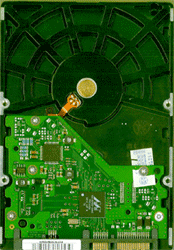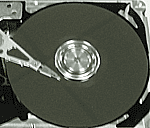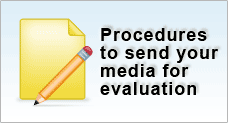Common hard disk failures
Hard disk drives could fail in any of the following ways :
 |
A 2.5" hard drive PCB Board |
Electrical Failure
The PCB is the “middleman” of sorts, controlling, communicating and coordinating to read and write data between the hard disk and the computer. As such, if the PCB gets damaged due to power surges or power spikes, you lose access to your data. Frequently, the pre-amplifier circuit of read-write head may also be affected.Symptoms |
|
![]()
Mechanical Failure
Mechanical damage normally arises as a result of impact or wear and tear.
Internal components, like the read-write head and motors, can become faulty without prior warning. The much dreaded head crash could be a by-product of mechanical failure.
Symptoms |
|
![]()
Logical Failure
Logical failure refers to any other non-physical failure types. It can be the easiest or the most difficult recovery job depending on the circumstances that leads to logical failure.Some examples include: Accidental deletion, accidental format, file corruption, software bugs, file system corruption, viruses and malware, and many, many more.
![]()
Firmware Failure
Firmware is the software program normally only accessible by the disk manufacturers. It is used to do low level disk testing and functions that are directly responsible for the proper functions and healthy state of hard disk.Without the firmware code, no communication will be possible between the PC system and the hard disk.
Modern disks normally have their firmware codes located on data platters and also the PCB board. If the firmware area of the platter is corrupted, the drive will appear to have failed even all the electrical and mechanical components are still fully functional.
Symptoms |
|
![]()
Bad Platter Area
 |
A hard drive platter |
There are various levels of bad sector severity. Depending on the situation, different techniques will have to used to "maximise" the recovery yield.
Symptoms |
|
![]()



